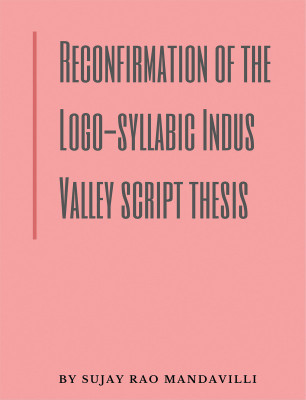Reconfirmation of the Logo-syllabic Indus Valley script thesis(English, Paperback, Sujay Rao Mandavilli)
Quick Overview
Product Price Comparison
The earliest known example of an Indus seal dates to 1873 in the form of a drawing published by Alexander Cunningham. Since then, thousands of examples of the Indus script have been discovered, and the Indus script has been subject to serious analysis by many scholars from all over the world and still continues to fascinate, enchant and frustrate innumerable researchers who have made many a vain attempt to understand its true nature and meaning. The nature of the Indus script remains elusive and there are currently many different schools of thought ŌĆō some think it represented a Dravidian language, some think it represented an Indo- Aryan language, while some are convinced it belongs to a third language group. Some argue that it represented a language while others argue it was only a complex ŌĆśsymbol systemŌĆÖ, either with or without a linguistic content. In this paper, we take a parsimonious approach with regard to the Indus script, attempt to understand its nature, examine the logical flaws of current theories with regard to the Indus script and conclude that it is impossible to draw any hasty conclusions about the nature of the Indus script without building rock solid theoretical models and that the Indus script issue is probably less simple than the most simplistic of theories make it out to be. We will conclude, that all things considered, further research is only likely to reinforce the idea that it was a logo-syllabic script and that any other scenario is highly unlikely.


